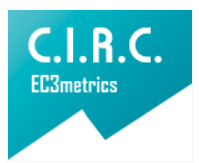Evaluation of techological capacity for the provision of occupational audiology services in three companies with noise factor of risl Popayan 2009
Evaluación de capacidad tecnológica y científica para la prestación de servicios de audiología ocupacional en tres empresas con factor de riesgo ruido Popayán 2009
Main Article Content
Businesses and factories have implemented new technologies that provide benefits to their productivity and gives them strength in the market, all in the context of a variety
of technological and physical resources that complement the work environment. These developments may give rise to risk factors such as noise, vibration, toxic, variations
in temperature and pressure which in turn negatively affect the health of the employee. The objective was to inspect the implementation of the conditions of technological and
scientific capacity for the provision of occupational audiology. We performed a quantitative, descriptive, cross sectional study. It was developed by three companies of the municipality
of Popayan, in the presence of noise risk factor, through direct application of an instrument developed by the Technical Annex to resolution 1043, 2006 and Integral Care
Guide based on the evidence for sensorineural hearing loss induced noise in the workplace. Two of the companies studied, provide occupational health services through contracts with IPS outside the company, therefore it was necessary to apply a portion of the instrument Within these. As results were specifically found that Company A 48% met the standard provisioning and maintenance, and 55.5% in the standard of service interdependence. Company B met with 44% in human resources, pharmaceuticals and medical devices with 32% in health care priority processes with 48% in health care records and records with 65% and up to 46% risk. Company C 74% met the standard for physical infrastructure and 62.5 % in the standard patient referral. The study concluded that none of the companies surveyed met all minimum quality requirements for the provision of these services.
Downloads
Publication Facts
Reviewer profiles N/A
Author statements
Indexed in
- Academic society
- Bogotá: Corporación Universitaria Iberoamericana
- Publisher
- Bogotá: Corporación Universitaria Iberoamericana
Article Details
Cuellar, J. (2007). Guía de Atención Integral Basada en la Evidencia para Hipoacusia Neurosensorial Inducida por Ruido en el Lugar de Trabajo (GATI-HNIR), Audiología Hoy, edición especial, 91, 66-91.
Ministerio de Protección Social. Ley 9 de 1979. Recuperado en Julio 24, 2010. http://mps.minproteccionsocial.gov.co/vbecontent
Ministerio de la Protección Social. Decreto 1011 de 2006. Recuperado en Junio 20, 2010. http://www.eevvm.com.co/dmdocuments/decreto_1011_de_2006__3_de_abril_.pdf
ZÚÑIGA, G (2004). Conceptos Básicos en Salud Ocupacional y Sistema General de Riesgos Profesionales en Colombia.
Ministerio de la Protección Social. (2008). Lineamientos para la Implementación de la Política de Seguridad del Paciente en la República de Colombia.
Ministerio de la Protección Social. Política de Prestación de servicios. Recuperado en Junio 20, 2010. http://www.minproteccionsocial.gov.co.












